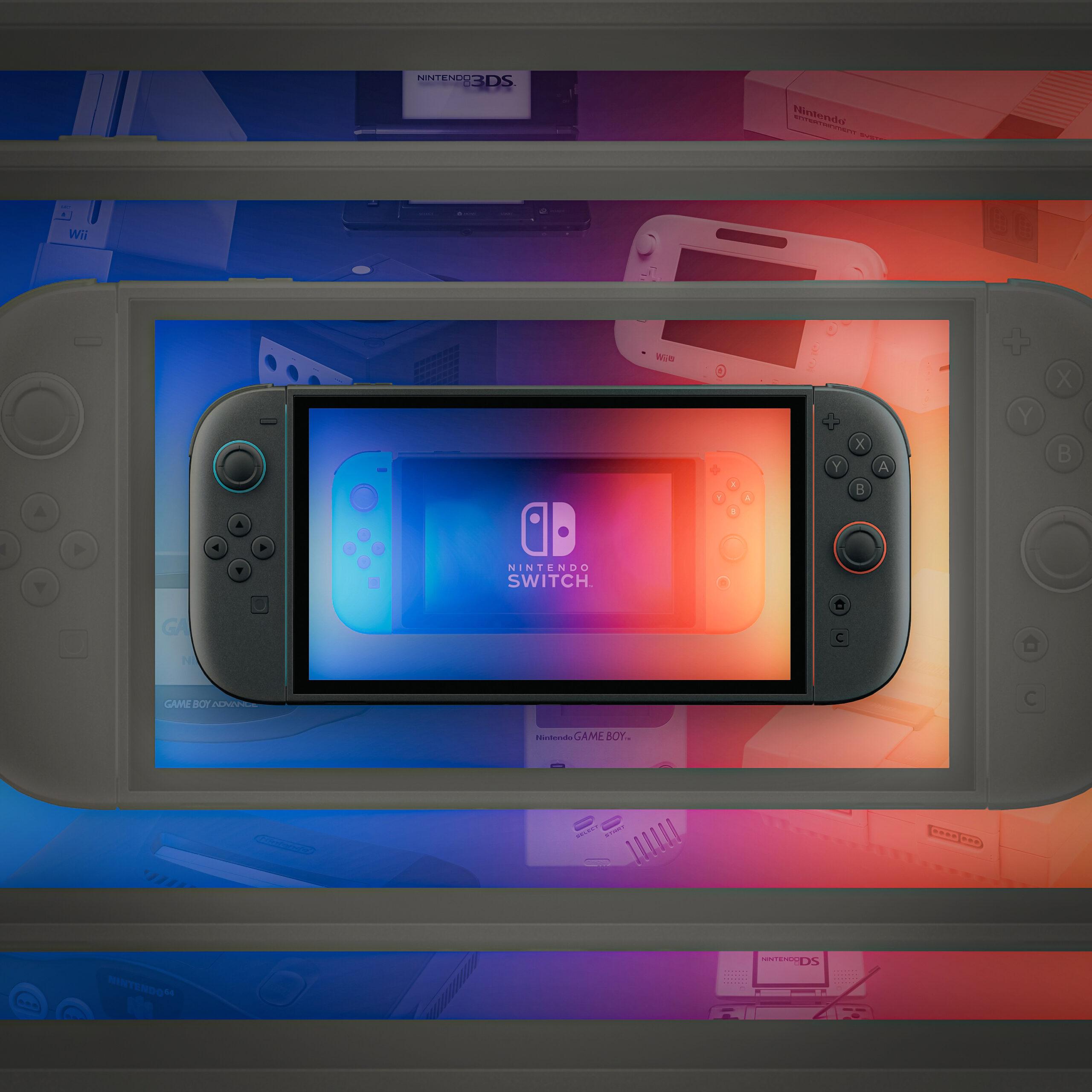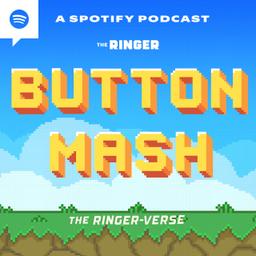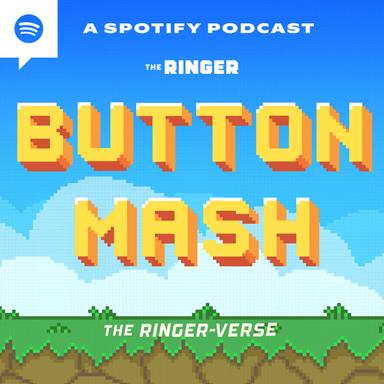The Nintendo Switch 2 Will Probably Be Good. Does It Have to Be Exciting?
The Switch was wildly exciting, and wildly successful. Can the sequel have the same success without the same excitement?
The Nintendo Switch 2, which debuts on Thursday, has already differentiated itself from its predecessor in one respect: a total lack of prerelease reviews. To the frustration of many gaming media members, and presumably some consumers, Nintendo declined to send review units to press outlets (including The Ringer) before launch because, the company said, “important features and updates” would not be available prior to a day-one system-software update. As a result, anyone who picks up the Switch’s successor (or any of its roughly two dozen launch titles) immediately will be plunking down cash without the confidence that comes from extensive vetting.
Day-one updates are standard these days, for hardware and software alike, but citing a day-one update as a reason not to provide review units is not. This striking departure from the typical practice surrounding the release of a new console—Nintendo’s past consoles included—has sparked speculation about the Japanese video game maker’s motivations for withholding its hardware. Is the barrier truly a technical one? A lack of confidence in the product? An excess of confidence in the product? Paranoia about piracy or leaks?
Regardless of the reason(s), it seems like a tall order to ask potential purchasers to fork over $450 despite Nintendo not permitting reporters to put the system through its paces outside the company’s supervision. Except … in this specific case, maybe reviews don’t matter that much. In the annals of gaming’s home hardware, Switch 2 may be the console least dependent on trying before you buy—or even reviewers having tried before you buy—which speaks to both its best and worst quality: familiarity. The Switch was wildly exciting, and wildly successful. The question facing Nintendo now is: Can the sequel replicate the original system’s success if it fails to generate the same excitement from the start?
Nintendo’s pending decision about how to handle its Switch followup—stay on course, or pivot to … something—was the subject of rampant prognostication and rumormongering even after the window for a 4K mid-generation hardware upgrade closed. As my colleague Justin Charity mused last year, before the new system was unveiled, “Will there be a Switch 2, mostly keeping with the design of the original device, or will the company once again launch some newfangled, quintessentially Nintendo oddity? … Change too little in the new console, and Nintendo risks being met with a shrug, if not backlash, from gamers who might not see any reason to hurry to upgrade from the original version of the Switch. Change too much, though, and you risk repeating the folly of the Wii U.”
Nintendo definitely didn’t do the latter. Even in its first-look trailer, which followed several months of escalating leaks, the company made its new system’s deep debt to the original Switch explicit. From its name to its aesthetic, the system is a Switch, but bigger, more powerful, and possessed of a few new bells and whistles. In October 2016, several months before Switch’s March 2017 launch, The Ringer’s Victor Luckerson noted, “It wouldn’t be a new Nintendo console if there weren’t a bold imagining of what a video game system should be.” Switch 2 tests that contention. It’s a new Nintendo console, but bold? Not quite.
Despite Nintendo’s deserved reputation for innovation, the company has produced some consolidation consoles that built on the foundations of their forebears: the Super NES; the Game Boy Advance; the 3DS. In earlier eras, though, the leaps in graphical fidelity that accompanied each new hardware generation were much more mind-blowing than they are now. Switch 2 games look better, and perform far better, than Switch games, but the graphical leap isn’t that large, and Switch 2 won’t come close to rivaling the power of the almost five-year-old PS5 or Series X (let alone last year’s PS5 Pro, or the next-gen PlayStation and Xbox that are likely a few years away).
Thus, even though Switch 2 seems like a new flame that should touch off a hot-and-heavy honeymoon phase with its early adopters, picking it up feels more like extending an existing long-term relationship, with all of its attendant comforts and dopamine declines.
Of course, straying from a fulfilling partnership in search of something spicier can be a means of self-sabotage. And it’s not as if there’s nothing adventurous about Switch 2. The system’s GameShare feature allows local play on up to four Switch or Switch 2 systems, with one copy of selected titles. Its GameChat service, while not revolutionary—or indefinitely free—offers video and voice chat that was missing from Switch. And its inclusion of mouse functionality in both Joy-Cons is a promising pathway to enabling alternate control schemes, supporting creative minigames, and easing the transition for PC ports. On the whole, though, it’s an iterative update: another Switch, but not so dated that it struggles to run recent third-party games and drastically constrains Nintendo developers’ ambitions. Its appeal is predicated on the same pitch as its ubiquitous progenitor’s: It’s portable, and it plays Nintendo games.
During the system’s shaky publicity rollout, Nintendo has banked on the system selling itself. And “portability plus Nintendo” is a persuasive pair of selling points—enough to make Switch the third-bestselling system ever, behind only the PlayStation 2 (which it could overtake) and Nintendo’s own DS (which it should overtake). That formula is still sufficient for me to buy in: I preordered when it went on sale in April, before I knew whether or when Nintendo would provide one for review. By then, I had already spent a day playing Switch 2 under controlled conditions at a Nintendo event. The system mostly met my expectations, but I’d calibrated my enthusiasm before I arrived. After Switch’s eight-year reign, the souped-up sequel’s virtues and drawbacks seemed self-evident before I saw it in action.
Switch 2 plays it somewhat safe precisely because the first Switch had such staying power: The system carved out a sweet spot in the gaming landscape and maintained a prominent place on the market long after the PlayStation 5 and Xbox Series X/S left it in their dust technologically. Odds are Nintendo was wise to stick to the same template this time, even if the concept isn’t as sexy in 2025 as it was in 2017. Barring some catastrophic hardware flaw—think Red Ring of Death, not just Joy-Con drift—serving up more of the same at higher resolutions and with faster frame rates likely eliminates any Wii U–esque downside risk. Granted, there’s much more portable competition than there was in 2017—from the Steam Deck, its many rivals, and maybe even Microsoft or Sony Switch alternatives—but a lot of people still want to play Nintendo games on the go.
I suspect that Switch-only players and multiplatform players may have differing levels of anticipation for Switch 2. If your gaming takes place only inside the Switch ecosystem, then you’re overdue for something new—and you’re about to gain access to a wide array of ports that weren’t playable on Switch. (While still being able to access Switch’s large library, courtesy of Switch 2’s backwards compatibility.) If you own another platform, though, Switch 2 is simply playing catchup, hardware-wise—video/voice chat and 4K output aren’t exactly cutting edge in 2025—and the selection of totally new games available at launch is scant.
Switch 2’s flagship launch title, Mario Kart World, is the best reason for a multiplatform player to attempt to snag a Switch 2 now. Despite being an enhanced version of a Wii U release, Mario Kart 8 Deluxe is easily the top-selling Switch game, and World is the first truly new Mario Kart game in more than a decade. Even so, the news that Switch 2 wouldn’t launch with a new Super Mario game, or any non-Mario Kart first-party title aside from Nintendo Switch 2 Welcome Tour, was deflating. As Christopher Dring wrote for The Game Business, “Mario Kart is incredibly successful because it is everyone’s second game. … I am not convinced Mario Kart is a system seller by itself.”
Oh, and it costs 80 bucks. Then again, World appears to be trying to do for Mario Kart what Breath of the Wild did for The Legend of Zelda. And based on my early exposure to the open-world racer, it may represent just as substantial a step forward for its franchise, if not as groundbreaking a game. So I am psyched for World, but not for much else in the launch lineup aside from Nintendo Switch Online’s addition of GameCube classic The Legend of Zelda: The Wind Waker, which was frustratingly inaccessible on Switch.
The cavalry is coming. Donkey Kong Bananza is six weeks away, cross-gen titles Metroid Prime 4: Beyond and Pokémon Legends: Z-A will follow later this year, and eventually, Nintendo will start to reveal its plans for the next installments in heavy-hitting franchises such as Super Mario, Zelda, Animal Crossing, and Super Smash Bros., as well as beloved lesser series like Luigi’s Mansion, Splatoon, and Pikmin. Ultimately, Switch 2 will distinguish itself as a delivery system for first-party exclusives—and as long as Nintendo keeps them coming as frequently as it did during the Switch’s lifespan, the system will be indispensable.
Nintendo has always prioritized quality software and fun over great tech specs. And good games rule the roost even on higher-octane hardware. The PS5 and Series X have their differences—DualSense haptic feedback here, Quick Resume there—but I’ve used my PlayStation more than my Xbox mostly because the former features more console exclusives. Switch was rich in that respect, but with only one killer launch app, modest graphical gains, and some amount of sticker shock, Switch 2’s “better Switch” pitch is both compelling and prosaic. And so, on the eve of the new system’s arrival, I’m not feeling (or sensing) the usual rush of “night before Christmas” console excitement.
Gamers will still line up to get their hands on Switch 2 at launch, and Nintendo will have no trouble selling its initial stock of systems (and many millions more). And after years of strong Switch sales, and with a more diversified IP portfolio, the company doesn’t need a resurgence the way that it did in the darker days of nearly a decade ago. I’ve owned virtually every Nintendo console dating back to the NES, and I’m not about to stop catching ’em all now. I fully expect to play and cherish Switch 2 as much as any system over the next several years. I just wish it could kindle some of the “N64 Kids” sentiment I often feel around the release of new consoles. Though as anyone else who’s old enough to have been an N64 Kid knows, it gets harder with each passing year to summon that spirit about anything, and video games are no exception. Been there, played that.
In a matter of hours, I’ll unplug an HDMI cable from my Switch, plug it into my Switch 2, and pick up the same Pro Controller I’ve been using for years. Only this time I’ll be using it to play Mario Kart World instead of Mario Kart 8 Deluxe, in 4K instead of 1080p. I am excited about that, but in a more muted way than I was when I first took Breath of the Wild from my living room to my bedroom or bathroom, or when I realized that my wife or I could keep playing without having to hog the TV. We can still do those things, and Breath of the Wild will run even better now (if we pay extra for an upgrade). It just won’t be as breathtaking this time around.



